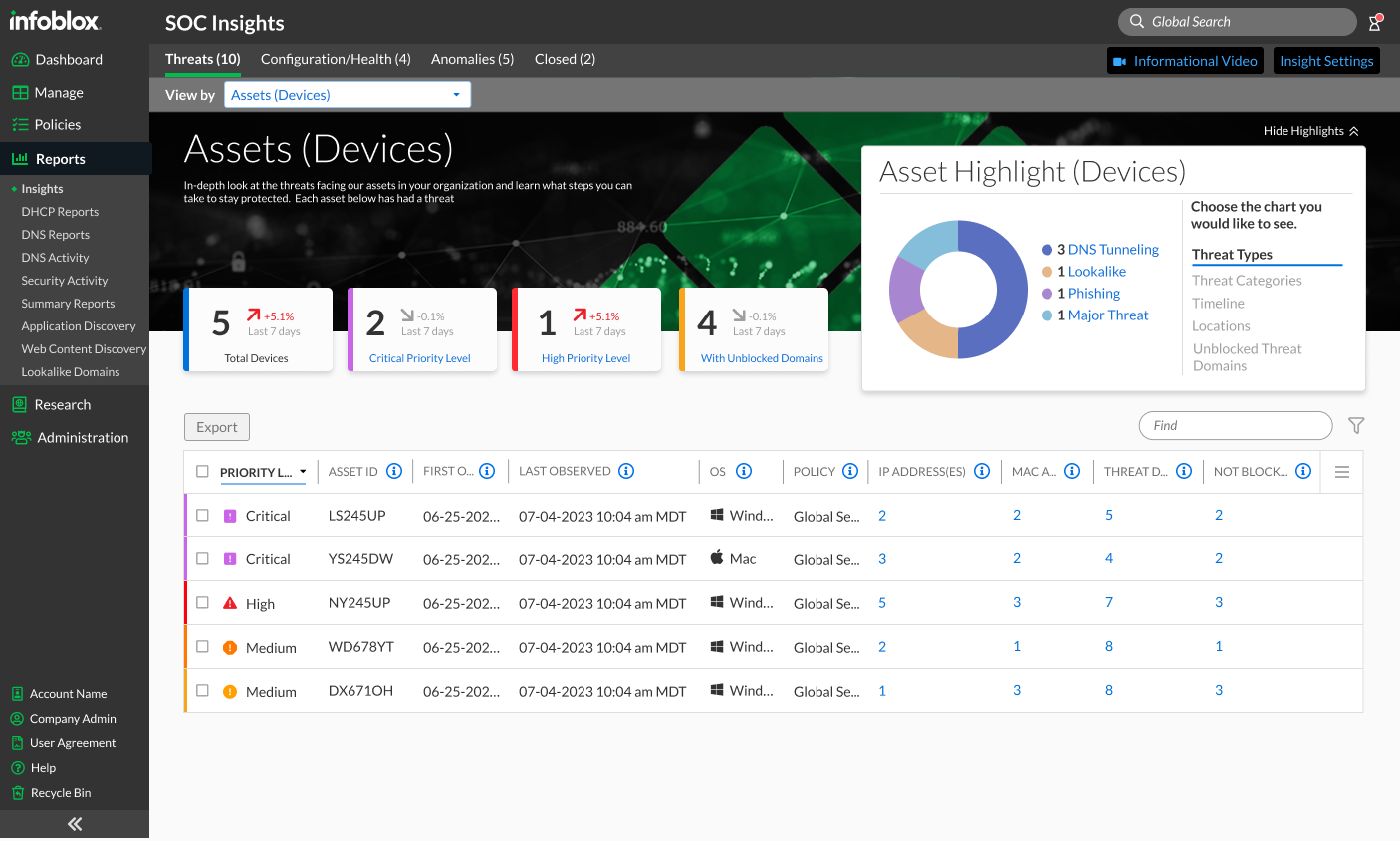Case Studies
These examples illustrate solutions for Network Administrators and Cybersecurity Analysts
Infoblox
2021-2024
Global Search
The search experience within the product did not meet user expectations. The redesign required a deeper understanding of user needs and a successful partnership with Development.
ADP
2015-2021
SOC Insights
The goal of this project was to become part of “operational furniture” for cybersecurity threat investigators and increase the total available market (TAM) for the product.
Bloxy AI Chatbot
To assist in onboarding and product configuration, we piloted the use of an AI Chatbot.
Product Innovation
Workforce Now innovation: how UX design transformed ADP’s highest grossing Human Capital Management SaaS platform.
Terminations Transaction: Streamlining User Experience for Efficiency
Project Overview The goal of the Terminations Transaction project was to enhance the efficiency and usability of the termination process. Originally a simple form with minimal usability issues, the process was nonetheless cumbersome for users, often requiring hours or even days to complete. User research revealed that clients were creating their own termination checklists and relying on manual steps and calculations.
Research & Findings Interviews with Customer Success Managers (CSMs) and client practitioners highlighted that while clients rarely called for support, the transaction was still time-consuming and error-prone. The research findings emphasized the need for a smoother, more automated process to reduce manual steps and enhance reliability.
Design Objectives Inspired by the vision of a “Turbo Tax-like” experience, we developed a user-centered design focused on five key pillars:
Goal-oriented navigation
Gradual user engagement
Intelligent automation
Trust-building through tone of voice
Clear verification over input
Our measurable goals included reducing manual work by over 50% and cutting transaction time by 20%.
Solution The redesigned process incorporated personalized, automated steps with machine learning-driven suggestions and verification checkpoints. This enabled a streamlined workflow, transforming a process with 12 manual steps into a mostly automated experience.
Outcomes The project exceeded initial goals, achieving:
A reduction in manual tasks to 29%
A 25% decrease in transaction time
Positive impact on sales, with a 10% increase in deal closures from the enhanced transaction demonstration.
Key Takeaways This project underscored the value of user research in problem identification, the importance of measurable design goals, and the benefits of prioritizing verification over manual input, all of which fostered stronger client partnerships and improved overall efficiency.
Visual Policies for Time and Attendance: Enhancing Policy Interpretation
Project Overview
Tracking employee time and attendance can be highly complex due to variations in rules across industries, states, and individual companies. Our time and attendance product’s backend processes were outdated and inflexible, so we set out to modernize the system by creating a new engine based on policies—a series of rules that determine how to pay each employee.
Challenges
Policies are essentially a collection of "if/then" statements, and due to the unique employment scenarios they cover, these statements can become extensive and complex. When testing the original text-only policies, we found that most users struggled to interpret the policies accurately, leading to confusion and errors in understanding how the logic applied to specific cases.
Approach
My team collaborated closely to address this challenge through iterative design. We experimented with different ways to simplify policy interpretation and ultimately developed the concept of "visual policies." Instead of relying solely on text, we incorporated graphical elements to illustrate the policy logic. For instance, we used a clock graphic to demonstrate the effects of a rounding rule, making the policy's impact immediately clear.
Results
The introduction of visual policies improved users' ability to understand and interpret policies by over 30%. This graphical approach provided a clear, intuitive way for users to grasp complex rule sets, significantly enhancing the usability of the time and attendance system.
Key Takeaways
This project highlighted the power of visual aids in simplifying complex information and demonstrated the value of iterative experimentation in user-centered design. The visual policies concept allowed us to modernize a critical component of our product, improving both functionality and user satisfaction.
Cross-Border Payroll Solution: Meeting Client Needs on a Tight Timeline
Project Overview
While working at ADP, my team was tasked with a last-minute project after senior leaders identified significant gaps in our payroll solution for clients with business across the U.S. and Canada. We were asked to redesign key payroll features to support cross-border clients, with a critical focus on usability and an aggressive 3-month timeline.
Challenges
A traditional, user-centered design approach would have required at least six months to complete this project. Given the tight timeline, we needed to adapt our process without sacrificing the quality of the final design.
Approach
I saw this as an opportunity to implement Lean UX methods with my team. Instead of following a sequential design and test process, we adopted rapid iteration cycles. We conducted user testing every two weeks, allowing us to continually learn and refine designs. Our approach was to test what we had, avoiding delays and keeping a rigorous testing schedule.
Results
Thanks to our lean approach, we delivered the project on time and exceeded our usability objectives. We tested with over 60 users in a short timeframe, achieving an 80% success rate on payroll tasks during their first attempt—well above our typical rates of 60-70%.
Key Takeaways
This project demonstrated the effectiveness of Lean UX in fast-paced environments, showing that with the right approach, high usability standards can be met even under tight deadlines.








